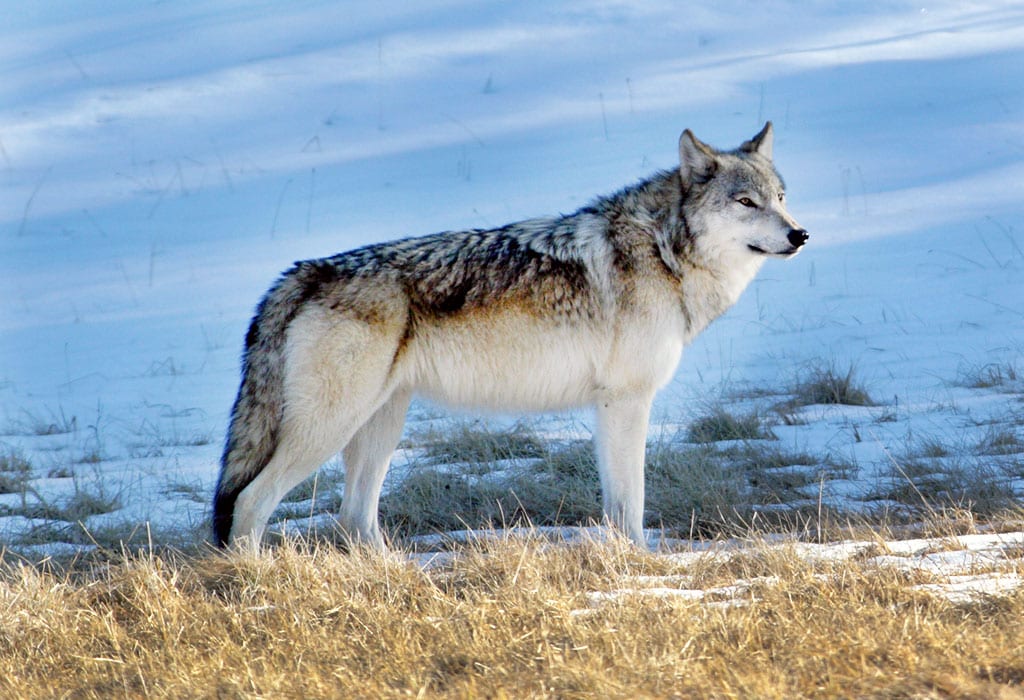After almost two years of work–some of it done in the shadows–Colorado Parks and Wildlife released their draft wolf management plan today. Let’s be clear: there is some good stuff in the plan. And we should never lose sight of the very good fact that the howl of the wolf is returning to Colorado. But, there are some major problems that still need to be addressed by the CPW Commission before the plan is finalized in May. Let’s go over them…
- The CPW plan would see wolves lose state protected status when there are only 150 wolves for two consecutive years. That threshold is far too low. Only one hundred fifty of any other species would be cause for alarm, not celebration of a job well done and it is concerning that CPW finds this number sufficient to remove protections. Colorado has the habitat (much of it on protected public lands) and ample prey base to support more than 4,000 wolves. In order for a wolf population to be self-sustaining, as is required by Proposition 114, science indicates the need for a minimum of 750 individual wolves. But CPW’s plan would inhibit reaching that threshold. We’ve seen how extremely slow the growth of the Mexican wolf population in Arizona and New Mexico is, and those wolves enjoy far greater protection than Colorado’s wolves will (see more on that below). So stripping wolves of state threatened status at such a low number is a big issue.
- CPW’s plan has no geographic component that would help ensure that wolves are distributed across Colorado’s Western Slope. A big reason that Coloradans voted to bring wolves back to the state is so that ecosystems that need wolves would get wolves. But the CPW plan could be considered “successful” with only one, isolated population of wolves. For example, 150 wolves could very easily make their home in spacious Moffat County. But that would not be fulfilling the intent of Proposition 114, which called for the ecological power of wolves to be felt throughout Western Colorado.
- Wolves will be killed. There is no doubt that livestock owners will pile the pressure on CPW to “lethally remove” wolves when cows or sheep are eaten. How readily and how often CPW will bow to that pressure and kill these social and intelligent family animals is unclear. But it will happen. Moreover, wolves will be killed on public lands. The last, best places for wildlife habitat, biodiversity, and wild-ness won’t be a safe haven for wolves who have roamed the Rockies for thousands of years. Prioritizing private interests above the will of the public at large, especially on public lands, should be concerning to all Coloradans.
- The onus to coexist is being placed on wolves. CPW’s plan does not require livestock owners to take proactive measures to protect their cattle and sheep from wolves, even when wolves are known to be present. Livestock owners will receive compensation for losses without having to do the bare minimum to coexist. We recommended that ranchers be required to remove carcasses to keep wolves away. And we recommended that ranchers at least try non-lethal coexistence techniques before lethal measures are taken. But for now, and unless the CPW Commissioners change things, the onus to coexist will fall on wolves.
So, where do we go from here? Guardians will spend the next several months pushing hard to make CPW’s final wolf plan look a whole lot like our Colorado Wolf Restoration Plan, which is based on the best available science and a 21st century ethic of coexistence. We will need your help in this effort, so please stay engaged and alert. We have a helpful action-centered webpage for you to do just that.
